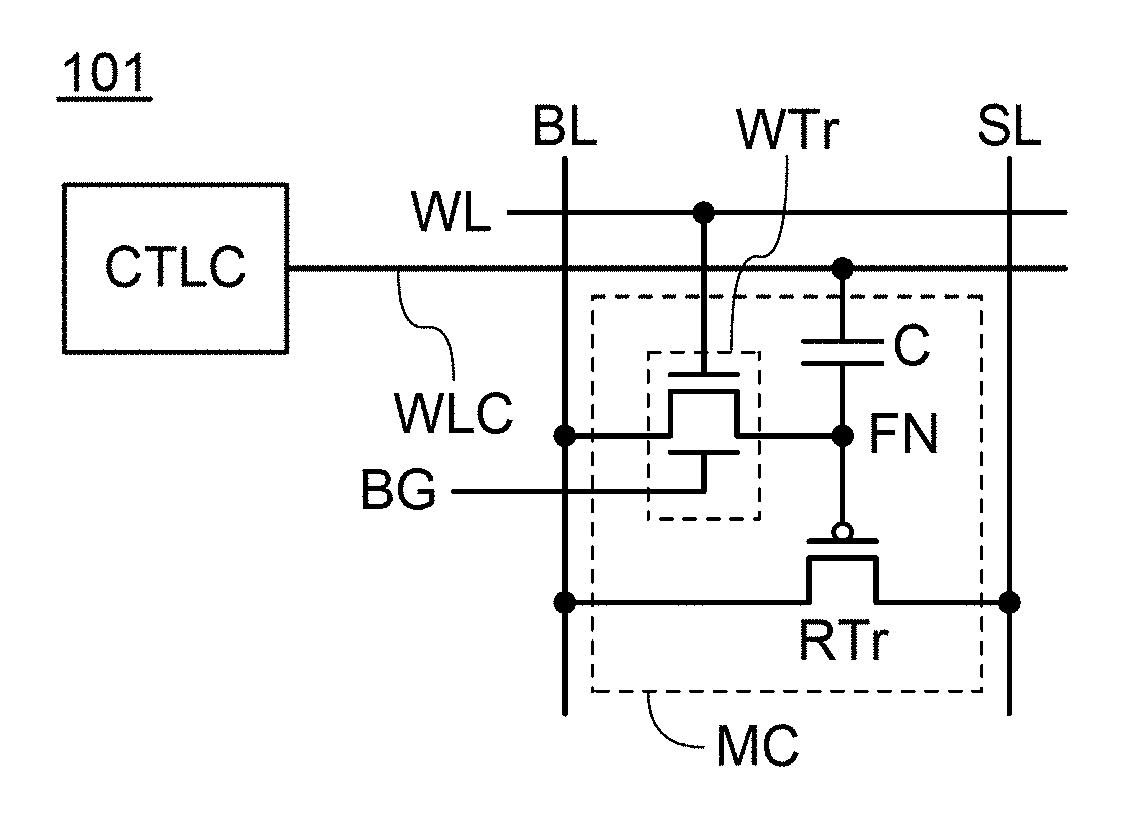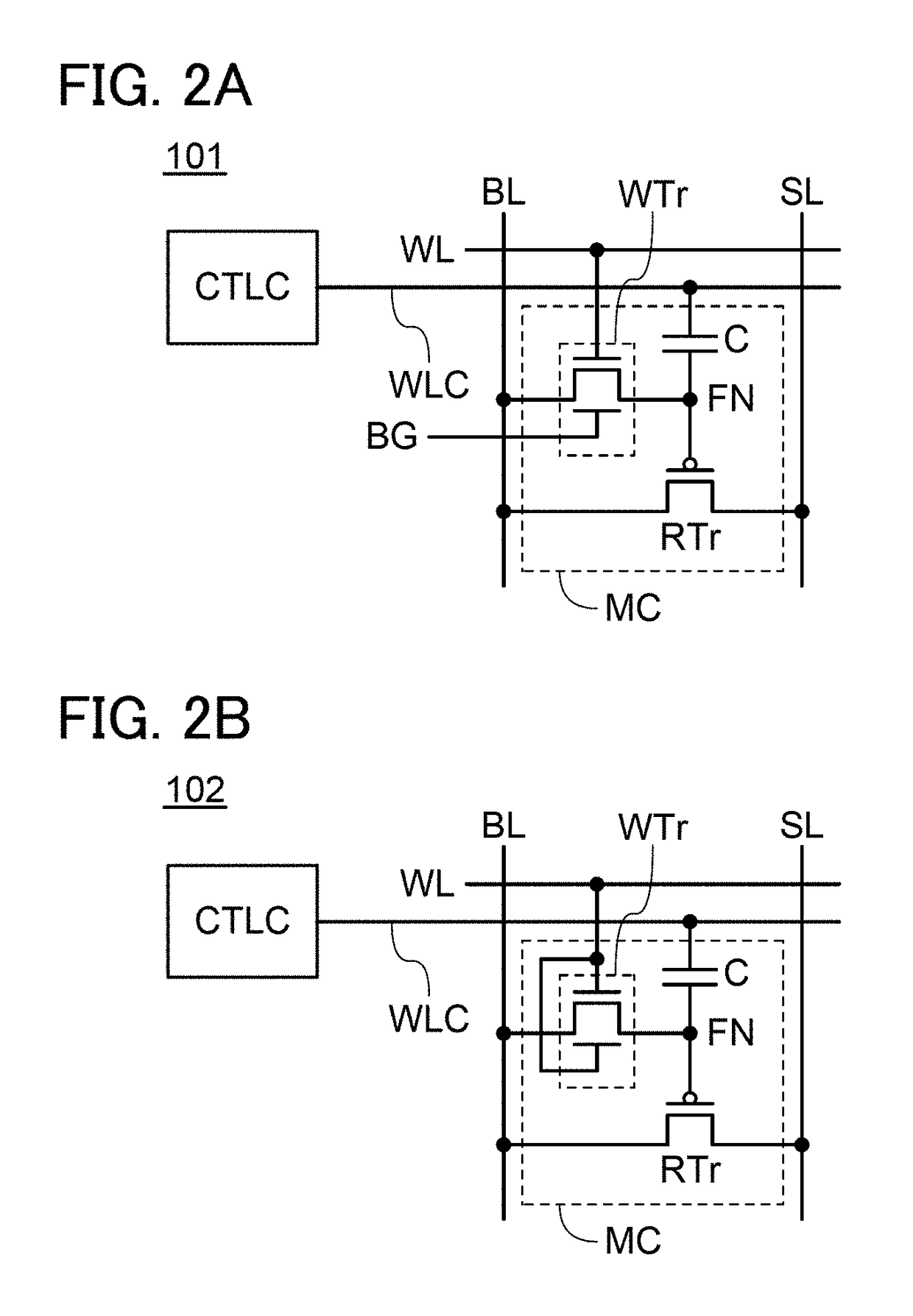Semiconductor device, memory device, electronic device, or method for driving the semiconductor device
a semiconductor device and memory technology, applied in semiconductor/solid-state device testing/measurement, semiconductor/solid-state device details, instruments, etc., can solve problems such as increasing circuit size, and achieve the effect of reducing circuit size, introducing a new driving method of a semiconductor device, and large data storage capacity
- Summary
- Abstract
- Description
- Claims
- Application Information
AI Technical Summary
Benefits of technology
Problems solved by technology
Method used
Image
Examples
embodiment 1
[0065]In this embodiment, an example of a semiconductor device of the disclosed invention is described.
Configuration Example
[0066]FIG. 1 shows an example of a semiconductor device of one embodiment of the present invention. A semiconductor device 100 includes a memory cell MC and a control circuit CTLC. The memory cell MC includes a transistor WTr, a transistor RTr, and a capacitor C. Note that the transistor WTr is an n-channel transistor, and the transistor RTr is a p-channel transistor.
[0067]The memory cell MC is electrically connected to a wiring BL, a wiring SL, a wiring WL, and a wiring WLC.
[0068]A first terminal of the transistor WTr is electrically connected to a first terminal of the capacitor C and a gate of the transistor RTr via a retention node FN. A second terminal of the transistor WTr is electrically connected to the wiring BL, and a gate of the transistor WTr is electrically connected to the wiring WL. A first terminal of the transistor RTr is electrically connected...
operation example
[0088]Next, the operation of the semiconductor device 100 of one embodiment of the present invention is described. FIG. 4 and FIGS. 5A and 5B are timing charts each showing an operation example of the semiconductor device 100.
>
[0089]First, an example of a writing operation of the semiconductor device 100 is described. For writing of data to the memory cell MC, a high-level potential is applied to the wiring WL to turn on the transistor WTr. After that, a writing bit signal is input to the wiring BL to write the writing bit signal to the retention node FN via the transistor WTr. Finally, a low-level potential is applied to the wiring WL to turn off the transistor WTr, so that writing of data to the memory cell MC is completed. It is preferable that the potential of the wiring WLC be a reference potential continuously.
[0090]FIG. 4 is a timing chart showing an example of the operation for writing data to the semiconductor device 100. FIG. 4 demonstrates changes in the potentials of the...
embodiment 2
[0135]In this embodiment, a configuration of a semiconductor device which is different from that of the semiconductor device 100 described in Embodiment 1 is described.
PUM
 Login to View More
Login to View More Abstract
Description
Claims
Application Information
 Login to View More
Login to View More - R&D
- Intellectual Property
- Life Sciences
- Materials
- Tech Scout
- Unparalleled Data Quality
- Higher Quality Content
- 60% Fewer Hallucinations
Browse by: Latest US Patents, China's latest patents, Technical Efficacy Thesaurus, Application Domain, Technology Topic, Popular Technical Reports.
© 2025 PatSnap. All rights reserved.Legal|Privacy policy|Modern Slavery Act Transparency Statement|Sitemap|About US| Contact US: help@patsnap.com



